My latest novel, ‘Occupied’, is set in a fictitious country in a fictitious world. But the events which take place in the first two sections are inspired by real events in Palestine, Kurdistan and Tibet. (The third section is inspired by the corporate occupation of the west). For this reason, ‘Occupied’ has been described as a work of ‘magical realism’.
This is not to imply that the situations in Palestine, Kurdistan and Tibet are the same. They’re not. You could write a book on the differences. But the same common themes, with slight variations, do apply to each country.
In this blog I cover a few such similarities…
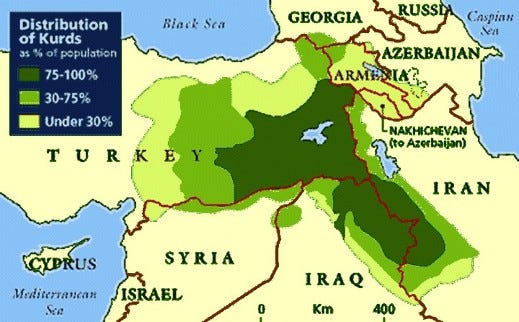
THE OCCUPATIONS
The first thing these three countries have in common is that they are all occupied; ruled over by harsh and distant governments that do not represent them. Most of the people indigenous to those regions, if given the choice in a referendum, would probably vote for independence.
PALESTINE
The Palestinian territories (the West Bank, Gaza and East Jerusalem) have been occupied by Israel since the ‘Six Day War’ in 1968. Although the whole of modern-day Israel was once classified as ‘Palestine’ until the Zionists occupied it in 1948. The Zionists were given ‘Israel’ by the British, who had occupied it since 1920, but they only really took control after they had ethnically-cleansed the land of hundreds of thousands of Palestinians during the Nakba. Before 1920 Palestine was occupied by the Ottomans (and many other groups before that).
KURDISTAN
The Kurds claim to have been living in the Zagrous Mountains since 6000BC. But in more recent millennia, like in Palestine, their land has been passed from one colonial power to another. The Kurds have often fought back; there was a Kurdish uprising against Islam in the 9th century which called for a classless society without gender divides, and a later uprising which opposed slavery. Yet Kurdish land was still owned collectively by tribes and villages, with a large degree of independence from any official statist entity. A Kurdish nation existed on the ground, if not in the official ledgers.
That all changed when Ottoman nationalism took hold in 1839. The Kurds fought back. In 1880 East Kurdistan broke free, but the British helped Iran to re-take it. There were further attempts at independence in 1913, but they were riddled by internal wrangling. Then, in 1919, the Sevres Treaty was about to give the Kurds an independent nation. But Ataturk came to power. He fooled the Kurds into supporting his war against the Armenians in return for a state of their own, then reneged on his promise. At the Lasuanne Treaty in 1923, the British and French split Kurdistan between Iraq, Iran, Turkey and Syria, in return for a share of the profits made from petrol, minerals and agriculture in that region. The Kurds have been living under the control of those nations ever since.
TIBET
Tibet first existed as a modern country, ruled from its capital Lhasa, when emperor Namri Songsten unified a group of neighbouring territories in the 7th century. Its borders were confirmed in the 9th century. But in the years that followed, many occupying nations (including China and Mongolia) exerted some degree of influence over the country from afar. Nonetheless, Tibet always claimed a degree of independence, led by successive Dalai Lamas.
Then, in 1949, the Chinese army invaded — killing 10,000 Tibetans in the process. In 1951 the 16 year old Dalai Lama was forced to sign an agreement with China, which gave Tibet some autonomy, but which also allowed China to establish civil and military headquarters in Tibet. China gradually exerted more and more influence over the years which followed, imposing their own form of political and economic policy on the region with scant regard for the indigenous people or their traditions.
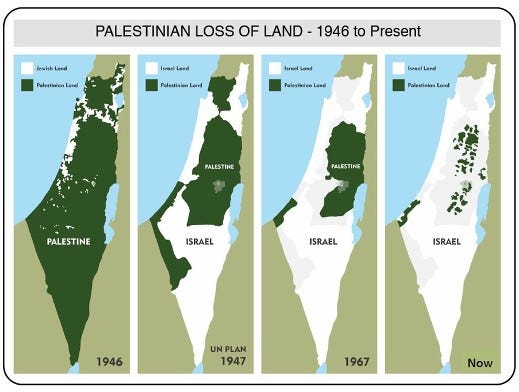
THE DENIALS
Much to the chagrin of the native populations, and most of the international community, the occupying nations all argue that they are not, in fact, occupying nations. They have created a whole myriad of statements to auger credibility and support, and funded massive operations to spread their propaganda.
PALESTINE
The Zionists will tell you that “Israel was Jewish first” and that it was the Palestinians who occupied it, ignoring the fact that people were living in towns like Jericho since 9000BC (according to archaeologists) whilst the Israelites only arrived there in 1400BC (according to the Jewish ‘book of Joshua’). That was the first, and often bloody occupation. The “Israel was Jewish first” claim also ignores the fact that the original ‘Israel’ was only ever Israelite, not Jewish. The only Jewish nation that ever existed in that region prior to 1948 was Judea, a small nation that only existed between 975BC and 586BC, after the Israelites split into Jews and Samaritans. The north of Israel became Samaria at that point, and many modern Palestinians descend from the Samaritans who lived there, having been forced to convert to Islam by the Ottomans.
Other Zionists have claimed “Muslims cannot live with Jews”, and that Jews therefore need their own state. This ignores the fact that over 1800 religions don’t have their own state, and that whilst there have been scuffles between the two religions, Jews were living peacefully amongst Palestinians in the region before 1948. This claim also ignores the examples of Muslims helping Jews, which prove the two groups can live together. In Albania, for example, the only country in Europe with an Islamic majority, Muslims saved more Jews per capita than any other nation during the holocaust. ‘Besa’ they said — they considered it their duty.
Israeli Prime Minister, Golda Meir, also claimed that “There is no such thing as Palestinians”, ignoring all the people (who currently choose to call themselves Palestinian) whose ancestors had been living in modern day Israel for millennia.
KURDISTAN
This denial of existence also occurs in Kurdistan. When Turkey was created in the aftermath of the fall of the Ottoman Empire, back in 1919, its new leader, Ataturk, forced a new national identity on his people. His nationalism was so strict, and so successful, that it would inspire Hitler and Mussolini. At its core was an ideology succinctly expressed in three small slogans: “One nation! One language! One People!” According to this philosophy, there had only ever been one nation, and anyone claiming otherwise was a subversive element who deserved to be punished. Indeed, since Kurdistan only ever existed as an autonomous region, rather than a modern day state with a centralised government, this myth was allowed to spread. Today, Kurdistan is the largest nation in the world not to have an official state.
TIBET
China, likewise, claims that Tibet never existed, that the region had always been part of China, and that it had been overrun by Tibetan monks until the “Peaceful liberation from the tyranny of the Dalai Lama”. This claim runs counter to the fact that the Dalai Lama is still much loved to this day, and not considered at all tyrannical by his people or most of the international community.
China uses Chinese historical sources to justify its occupation, even though those sources also claim that most countries with whom the emperor of China had relations, not only Tibet, were vassals of the emperor. China ignores all Tibetan source material, including the Sino-Tibetan Treaty of 821/823AD (inscribed on a stone pillar in the middle of Lhasa), in which the Tibetan and Chinese rulers agreed: “Both Tibet and China shall keep the country and frontiers of which they are now in possession. The whole region to the east of that being the country of Great Tibet, from either side of that frontier there shall be no warfare, no hostile invasions, and no seizure of territory.”
China justifies its policies by saying it has brought, “Unprecedented liberty and prosperity” to Tibet, despite the fact that Tibet is one of the twelve most repressed countries in the world (according to the ‘Freedom in the World Report 2014’), and that materialistic ‘prosperity’ is not a particularly significant consideration for Tibetans, who are a spiritualistic people at heart.
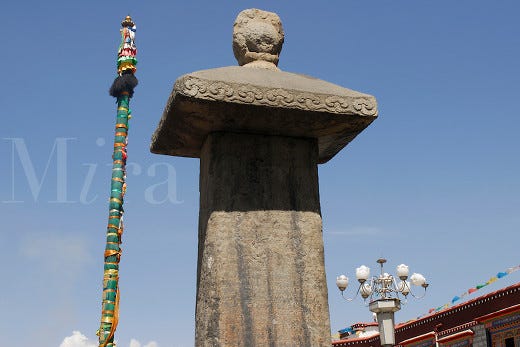
THE SETTLEMENTS
In order to control their occupied territories, the occupying powers have gone to great lengths to fill them with their own citizens. Millions of indigenous people have been killed or forced into exile (as covered in the sections below). And Israel and China have also moved millions of their own people into Palestine and Tibet, despite this being illegal under the fourth Geneva Convention, Article 49, which states: “The Occupying Power shall not deport or transfer parts of its own civilian population into the territory it occupies.”
PALESTINE
The vast majority of Israelis descend from Jews who were encouraged to immigrate after the Zionists took control in 1948, simply because they were Jewish, whilst the indigenous population who had fled during the Nakba were blocked from returning to their land. The Israelis took four million acres of land from the Palestinians during the Nakba, and have since built many towns and villages there.
The problem of settlements is particularly acute in the so called ‘occupied territories’ (East Jerusalem, Gaza and the West Bank — but not the rest of occupied Israel), where according to Oxfam there are over 520,000 illegal settlers.
The Israeli government has destroyed over 15,000 Palestinian structures in that region since 1993, “Including homes, water systems, agricultural facilities and other vital property.” What they haven’t destroyed, they have often confiscated, especially in Hebron and East Jerusalem where many Israelis now live in homes which were taken from Palestinians.
To maintain control, the Israelis have created 550 checkpoints in the occupied territories. This has enabled settlers to take 42% of the land in the West Bank, where they have covered the hilltops with new settlements and outposts. The settlers control 80% of the water. The Palestinian economy has been decimated, land has become unaffordable for many Palestinians, and unemployment has soared.
TIBET
China has transferred so many of its citizens to Tibet that they now outnumber the indigenous population, 7.5 million to 6 million. The Chinese government encourages its citizens to relocate by offering them subsidies, work and other financial incentives; an offer which is too good to refuse for many of China’s poorest residents.
Tibetans have also been kicked out of their ancestral homes in the centre of Lhasa, and moved to overcrowded buildings in the suburbs. Their homes have been bulldozed and replaced by cheap modern structures which house Chinese immigrants. The Dalai Lama has called it “Cultural genocide”.
The influx of Chinese nationals into Tibet is not only having an adverse effect on the native population, but on the environment in which they live. China dumps its nuclear waste in Tibet, and engages in logging which causes landslides and flooding. In 2008, the Dalai Lama told The Guardian newspaper: “[There has been] mining without proper care, deforestation… irrigation without proper planning. In some valleys, new diseases have developed which some specialists believe is the result of water pollution.”
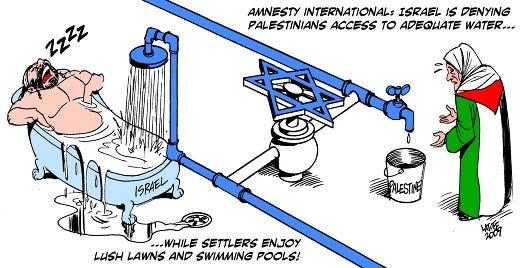
THE PHYSICAL ATTACKS
Of course, simply taking over a nation, denying its existence, and moving your own population onto your newly conquered land cannot be enough to sustain an occupation. If that’s all you did, the natives would fight back. And so the occupying powers all use force to maintain their occupations.
PALESTINE
My earlier blogs in this series cover the process of ethnic cleansing in Palestine from the Nakba in 1948 to Hebron today. I’ve also written about the apartheidwhich allows the authorities to abuse Palestinians in a way which would be illegal if applied to Israelis.
Violence against Palestinians is an ongoing process, in which the settlers play their part. They have been known to shoot teenagers on peaceful protests; to march on towns with sticks, shovels, slingshots, axes, guns and dogs; and to destroy property. They often use children to commit these acts, since they are immune to the law. Soldiers help the settlers in such situations, arresting the native Palestinians to protect settlers from reprisals.
The soldiers attack Palestinians too; they admit to it in an extensive series of testimonials collated by ‘Breaking the Silence’:
Israel have an ‘Elite Terror Fighting Unit’ full of soldiers who disguise themselves as Arabs. It’s their mission to kill as many Palestinians as they can. But the majority of Israeli soldiers are members of the ‘IDF’.
One IDF soldier was told by his commander, “Shoot here, shoot there, shoot there.” He was expected to unleash 400 bullets each night. Another soldier admitted to firing on an ambulance with a machine gun. Other soldiers were told, “I want riddled bodies”, “You aren’t measured by arrests, you’re measured by the number of people you kill”, and “We are going to eliminate six Palestinian policemen from some checkpoint in revenge of the six they took from us.” Soldiers have head-butted locals, made them march barefoot, and attached them to the front of moving vehicles.
These individual incidents are part of a wider strategy which includes ‘demonstrations of presence’ and ‘mappings’. Demonstrations of presence are where soldiers make noises at night, just to let the locals know they’re in charge; firing bullets into the sky, into cars, into water tanks, and throwing stun grenades down the street (known as a ‘Happy Purim’). Mappings are where soldiers storm a house (on one occasion simply to watch a football match), make a note of the layout, possessions and people inside. Sometimes the residents are made to wait outside in the cold in the middle of the night. On one occasion, a soldier put a gun in a random person’s mouth and asked, “Where is the suspect, tell me where he is now before I blow your head off.” Soldiers also make random arrests without evidence, set up random checkpoints, and take possession of people’s homes.
KURDISTAN
Such acts of violence have also taken place in Kurdistan. In the 1990s, Turkish forces set hundreds of Kurdish villages on fire. Some villagers were stripped naked and marched away, others were buried alive in mass graves, or thrown into acid wells. The Kemalists beat pregnant ladies, forcing them to miscarry, and clubbed babies to death in front of their mothers’ eyes.
I spoke to a student in Gaziantep who experienced such acts first-hand. The soldiers burnt his village twice before he was forced to leave. That student still dreams of going back home, but he says the soldiers destroyed everything there, including all the vines which supplied villagers with a living. There’s now, “No electricity, no gardens, no farms, no animals, no life.”
Turkish soldiers used to strip that student’s parents naked and beat them. In the end, they killed his father and uncle.
I also met another young man in Gaziantap whose father was kidnapped whilst driving a truck. He hasn’t been seen since.
TIBET
When China took over Tibet, similar acts of violence took place. Soldiers fired indiscriminately, killing people and dogs. Then they put their bodies in a pile, poured kerosene over them and set them on fire. They imprisoned the intellectuals and senior monks. They stole crops.
Today, there are twenty Chinese soldiers in Tibet for every Tibetan. Children have been forced to kill their parents. Mothers who have a ‘child out of quota’ are often forced to have abortions. If they cannot afford to pay a prohibitively expensive fine, they are made to undergo a forced sterilisation in which the fallopian tubes are torn out without any anaesthetic. One Tibetan told me that there are “More CCTV cameras in Tibet than windows”, and that you have to swipe a biometric ID whenever you move around in public.
Over a million Tibetans have died as a result of China’s occupation.
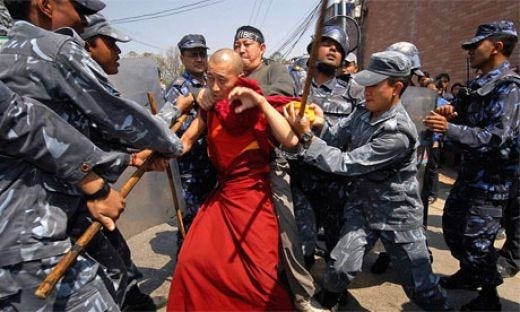
DIVIDE & RULE
Such intimidation leads to fear, which leaves many occupied people open to manipulation. This is the case in Palestine, Kurdistan and Tibet, where the occupying powers use every trick in the book to cause divisions between the indigenous populations. In doing so, they are often able to quell the resistance they would naturally expect to face.
PALESTINE
Wherever I looked, whoever I spoke to, I seemed to come across new divisions in Palestine; between Palestinians in the ‘occupied territories’ and those in ‘Israel’; between locals and displaced refugees; between those who had permits which allowed them into Israel and those who did not; between those who had stayed and those who were in exile, between men and women, young and old, activist and apathetic, those who worked for Israelis and those who did not.
This is perhaps the most alarming success story of the Israeli government; they actually use Palestinians to build the apartheid wall, checkpoints and settlements which are oppressing them!
The Israelis do not use physical force to create such a workforce, merely economic force. As a result of their occupation, 30% of Palestinians are unemployed. Those who are in work, on average, earn half the Israeli minimum wage.
And so many Palestinians work for Israelis, even though health and safety standards are often poor, and breaks are often unpaid. The Palestinian workers get paid less than half their Israeli co-workers, but don’t complain because they fear they’ll lose their jobs, and because they’re often getting paid double what they would earn if they weren’t working for Israelis.
“I feel like a slave,” one Palestinian told the BBC. “But I have no alternative.”
Another worker told the BBC he was working to fund treatment for his disabled son, another to support his 10 brothers and sisters.
KURDISTAN
Unlike the Israelis, the Turks have used force to turn Kurd against Kurd.
I met a musician in Kurdistan whose village was invaded by the Turks. “We will give you guns and you can fight the gorillas,” they told the adults. “If you don’t you’ll have to run away.”
Similar situations occurred all across the country during the 1990s. Some Kurds joined the PKK to fight for Kurdish independence, but others joined Turkey’s ‘Village Guards’ (bribed by the promise of safety and statues) to fight against their own. Those who joined up were allowed to stay in their villages (and ended up hating the PKK), those who refused had their homes burned down and were forced to move. The Kurdish population was split.
This process continues today in Turkey, where everyone has to do military service when they turn 20. I spoke to Kurds who were doing everything they could to escape; paying an 18000 Lira fee, staying on in education, lying about their age or hiding. But many Kurds do get recruited. Brothers end up fighting against brothers.
There have even been Kurdish prime ministers and presidents in Turkey. They have all turned their back on their own people.
In my blog about Israel’s apartheid, I concluded that the real tragedy of that system was how splitting up Palestinian and Israeli allowed the troubles to continue. A whole system of checkpoints, one-nationality roads and towns, divided the people and stopped them from realising how similar they actually were.
I saw exactly the same thing in Kurdistan, where there’s also a military presence in most towns, and checkpoints on many roads. I met one Turkish girl who said most Turks simply couldn’t understand why the Kurds would be unhappy. She told me they would ask: “Why would people living nice peaceful lives in the mountains, with their villages and farms, want to start fighting? They must be deranged.” The Kurds meanwhile say they can live with any people of any race or religion, but not the Turks, because they’re “Too violent”. On the same day that Turkish girl gave me a list of examples about how Kurds don’t give their women any rights, a Kurd gave me a list of examples about how Turks don’t give their women any rights. They all seemed happy to turn on each other, without actually meeting or talking to each other, and in doing so they all ignored the real oppressors ruling their countries.
TIBET
The Chinese aren’t nearly as subtle as the Israelis or Turks; they run events called ‘Struggle Sessions’ which wouldn’t look out of place in George Orwell’s classic book, ‘1984’.
Struggle Sessions often start with public accusations of crimes (such as holding opinions which run counter to the official dogma of the Chinese state). Chinese soldiers put the accused individuals in front of their community and beat them as a lesson for everyone else.
The Chinese then engage in question and answer sessions in which Chinese officials bark questions at Tibetan citizens, who are made to reply in unison with scripted answers, dedicating themselves to China and showing support for everything their occupiers do.
This process of indoctrination continues at school. Some children have been influence so much that they return home and beat up their very own parents!
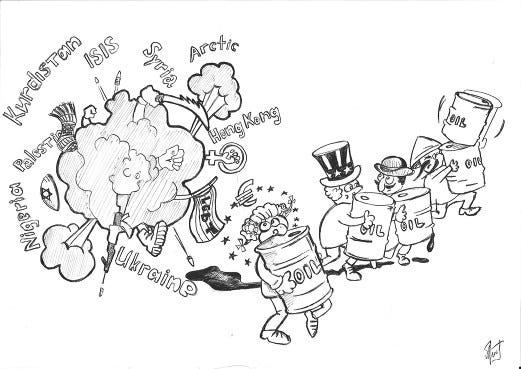
EXILE
The occupying nations have gone to great efforts to create majority populations in their occupied lands. This has required two tactics; transferring their own populations onto those lands (as detailed above), and forcing the indigenous populations to flee their homelands in fear of their lives. As a result, the world is currently full of Palestinian, Kurdish and Tibetan refugees.
PALESTINE

The first wave of Palestinian refugees left home in the late 1940s. During the Nakba Israeli gangs ransacked village after village, killing many Palestinians and forcing others to leave. 700,000 refugees fled to neighbouring countries, often by foot, with barely any possessions. They were joined in 1968 by yet more refugees; the victims of the annexation of East Jerusalem, Gaza and the West Bank.
Today, seven million Palestinians live in exile; in the occupied territories, Lebanon, Syria, Jordan and all around the world. Many of them have been living in refugee camps for over 65 years.
KURDISTAN
When the Turkish forces burned Kurdish villages, many Kurds were also forced to flee to save their lives. The musician I mentioned above, for example, headed for Diyarbakir. All eleven members of his extended family had to live in two rooms. At night-time the police shone their lights through the windows — his parents told his siblings it was the moon. The police also made his family cut down the trees outside their home, because they said a guerrilla fighter could hide in them!
About 1.5 million Kurds now live outside Kurdistan and the countries that occupy Kurdistan, including 800,000 in Germany alone. Many more live in parts of Turkey and Iran outside of Kurdistan itself.
TIBET
Since the Dalai Lama went into exile in 1959, many more Tibetans have been following him to India each year — looking for safety, freedom, and the opportunity to practice their own culture.
The journey across the mountains can take over a month, it costs £75 (3 months wages), and is often treacherous. Escapees can get frostbite, blackened toes, snow-blindness, or liquid in their lungs. Some people hallucinate; one saw green snow and asked, “Why don’t they have cows up here?” Those who stop moving usually die. The mountains are littered with bodies which poke out of the snow; with a pair of feet here and some hands there; with open mouths and glaring eyes. And if the snow doesn’t get the escapees, the Chinese forces might; the film ‘Murder in the Snow’ shows Chinese snipers shooting at Tibetans as they flee (below).
Today, an estimated 150,000 Tibetans live in exile, mainly in India.
THE ATTACKS ON CULTURE
Those people who stay in their native lands are, in the cases of Kurdistan and Tibet, not only subjected to physical attacks. They are also subjected to cultural attacks. To practice their culture is a crime.
KURDISTAN
The attacks on Kurdish culture started with Ataturk’s ‘one nation, one language, one people’ policy. Speaking the Kurdish language was banned from 1923 till 2003. If pupils spoke it at school they would be shushed or told off. Some people were executed for speaking Kurdish. The Turks said that the Kurdish language never existed; that it was just a mix of Persian, Arabic and Turkish. On prison visits, people would have to look at each other in silence if they couldn’t speak Turkish.
Kurdish music was also banned. The musician I mentioned above was arrested when he was accused of teaching Kurdish songs in a guitar lesson. The police asked him, “Why do you teach this? The Kurdish language doesn’t even exist.” And I also spoke to another young Kurd who saw the body of his neighbour, riddled with bullets, face up in the street, when he was aged just 6. That man had been assassinated because he had been selling cassettes of Kurdish music.
The Turks arrested academics as part of a ‘radical revolution’.
And those Kurds who weren’t arrested or killed were manipulated. TV shows spread the Turkish culture and language; portraying Turks in nice clothes with gentle personalities, which gave many Kurds an inferiority complex. When Kurds went to cities they were treated like slaves, on the lowest social strata, doing the worst jobs. They felt ashamed, so they assimilated to get more opportunities, and lost their Kurdish identity in the process.
Every shred of the Kurdish identity was whitewashed.
I experienced this phenomena first hand in Mardin; a beautiful town full of narrow snaking paths and vibrant markets which wrap themselves around a hilltop castle. The Turkish occupiers have surrounded that castle with barbed wire, and placed a large Turkish flag at its centre which can be seen from anywhere in town. The local school, which also has a Turkish flag outside, is called ‘Ataturk school’. The museum refers to Ataturk as a nation-builder without any irony.
Where Kurdish culture was not obliterated, it was stolen. ‘Kurdish baths’ became ‘Turkish baths’. The Turks claimed the Kurds’ kebabs, music and dance as their own. They banned the Kurdish colours (yellow, red and green), and the celebration of Nevroz (the Kurdish new year). Then, some years later, they claimed those colours as their own, and celebrated the ‘Tree Festival’ on the same day as Nevroz. The Iranians claimed Kurdish food and carpets as their own. The Arabs claimed Kurdish science, literature and music.
TIBET
A similar sort of nationalistic fervour has also gripped Tibet.
Having branded themselves as liberators, freeing the Tibetan people from the Buddhist monks, the Chinese set about destroying as much of the Buddhist culture as they could. They attached ropes to statues, pulled them to the ground and smashed them. They walked over holy scriptures. They destroyed over six thousand monasteries, and put CCTV cameras inside others. They forced monks and nuns to fornicate in the street. They made it illegal to possess a picture of the Dalai Lama.
Then the Chinese imposed their own culture onto Tibet. They filled the centre of Lhasa with discos, bars, karaoke clubs and brothels. They turned a serene and spiritual lake into a resort full of casinos. They encouraged Chinese tourists to treat Tibet like a holiday camp. They took nomads, used to roaming the land, and made them live in walled-communities which are surrounded by police. As part of this ‘cultural genocide’, they taught the Chinese language in school and only gave high ranking official positions to Chinese speakers. In the 1960s they forced Tibetans to produce maize instead of Barley, the traditional Tibetan staple, which resulted in a poor harvest and thousands of Tibetan deaths.
In China today, anyone who doesn’t conform, and anyone that practices Tibetan art forms or dreams of independence, is liable to imprisonment for ‘splitism’; a crime under the terms of the ‘Cultural Revolution’. One monk, for example, was arrested for writing “Free Tibet” in a book. Those who aren’t arrested are humiliated and castigated during Struggle Sessions, where they are told things such as: “You have oppressed the people. You have practised the dharma.” (Dharma is the Buddhist law).
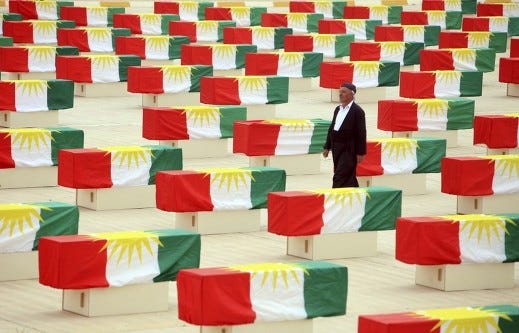
THE CULTURAL RESISTANCE
Despite the cultural oppression outlined above, many people in occupied territories continue to practice their culture and speak their language. Not only does such behaviour help to keep their people’s identities and traditions alive, it also help them to fight back against their oppressors in a way which is non-violent and often uplifting.
PALESTINE
Palestinians have turned the apartheid wall, a global symbol of their oppression, into the biggest art gallery in the world. Political slogans, calls for peace and justice, Palestinian flags, pictures and cartoons cover that edifice. Graffiti, in fact, can be seen all over Palestine; in refugee camps and towns, created by locals and by Banksy (the world-renowned artist).
In Hebron I met the ladies at an embroidery collective who create handmade items which often featured the Palestinian flag. And in Bethlehem I stayed in a hostel run by ‘IBDA’, which means to “Create something out of nothing”. They use dance to keep their national identity alive, as the video here shows (1 hour and 12 minutes in).
In this video people say what dance means to them: “When I dance I feel like I am expressing the meaning of Palestine.” “Dancing sets me free.” “The dance represents my story, and my grandfather’s story.”
KURDISTAN
In Gaziantep, I met one person who described themselves as a ‘language activist’. He speaks the Kurdish language to help keep it alive, and he teaches it too. As a result, he has been arrested twice whilst protesting peacefully, and he has been stalked by policemen whilst out in public. He feels under pressure to become more passive, but he is determined to continue.
That man comes from a tradition of language activists in Kurdistan. In Diyarbakir I met one of the founding father of the movement; a translator who worked for a cultural institute in Istanbul during the 1990s. He helped to produce a cultural review which was passed from hand-to-hand in cafes, and hidden under shelves in newsagents’ shops. It was dangerous work; most of the translator’s friends got killed, and the translator himself got detained almost every week. But he feels proud of his work; he has inspired a whole new generation of Kurdish translators and writers, and translates foreign works into Kurdish himself. On the back of his work there is now a Kurdish theatre scene, although the police do raid theatres at random and fire bullets into the air during performances, just to shake people up.
Then there is the musician I mentioned above. Not only does he perform Kurdish music, he also dreams of creating a Kurdish cookbook to help keep Kurdish cooking alive.
TIBET
Whilst writing ‘Occupied’, I stayed in a village called McLeod Ganj which is home to the Dalai Lama and a large Tibetan population. There, nestled amongst the hills, is TIPA — the Tibetan Institute of Performing Arts. TIPA educates generation after generation of Tibetans how to perform traditional Tibetan music, dance and theatre. If Tibet is ever liberated, those students will be qualified to re-introduce Tibetan culture to Tibet. In the meantime, they are keeping Tibetan art alive whilst in exile.
In May 2010 the report ‘A Raging Storm‘, by International Campaign for Tibet, revealed that 31 Tibetan writers, singers, bloggers, intellectuals were detained by the Chinese authorities. This provides some evidence to suggest that there is also a cultural movement inside Tibet, and that artists in Tibet itself are fighting back against their Chinese occupiers and the cultural genocide.
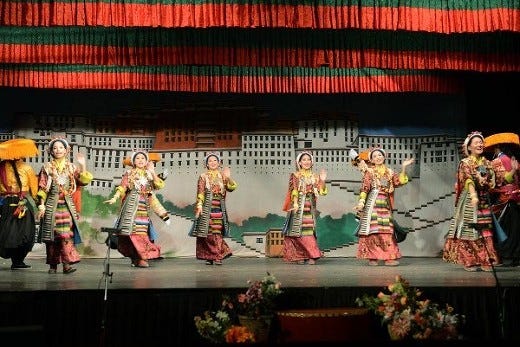
THE PHYSICAL RESISTANCE
Resistance to occupation has not always been peaceful. Indeed in Palestine, Kurdistan and Tibet, there have been a number of mass rebellions.
PALESTINE
There have been two main rebellions in Palestine. The first ‘intifada’ began in 1987, when an Israeli truck collided with a Palestinian car, killing four natives in the process. A mass movement spread across the country, organised by a plethora of groups and individuals who acted independently of their political leaders. There were general strikes, boycotts, refusals to pay taxes, and barricades. The Palestinians also threw stones and Molotov cocktails at the Israeli soldiers. Israel responded by sending in 80,000 soldiers. By the time the first intifada finished in 1991, 2044 Palestinians and 201 Israelis had been killed. But that rebellion did lead to the Oslo accords, in which Palestine was granted a limited amount of self-governance in the West Bank and Gaza, but not in East Jerusalem or on the 4 million acres of land which were taken in 1948
The second intifada started in 2000 when stone-throwing Palestinian protestors were shot at with live-ammunition by Israeli soldiers. That led to protests all across the occupied territories, at which Palestinians were attacked again. In the years which followed Palestinians carried out suicide attacks, and Israeli soldiers attacked Palestinians with gunfire, tanks and air-raids. Over 3000 Palestinians, and around 1000 Israelis were killed.
The Palestinians have formed their own armies, Hamas being the most famous, in an attempt to go toe-to-toe with the Israeli army. But their soldiers, who the Israeli propaganda machine has dubbed ‘terrorists’, have far less money and weapons than their state-sponsored foe. They’re a thorn in the side of the Israeli state, but they’ve struggled to win friends in the international community.
KURDISTAN
When Turkish forces erected a sign at the site of a mass grave, full of innocent Kurdish villagers, which said “Kurds and Kurdistan has been buried here”, the Kurds fought back. They replaced that sign with one which read, “The Kurdish revolution and freedom fighters of Kurdistan started from here.”
In the years that followed (from 1984 onwards), the PKK took the fight to Kurdistan’s Turkish occupiers. They suffered great losses; losing over 22,000 of their own, and taking out over 6,000 of their enemies. But as a result of their fight, much of the cultural attacks on Kurdistan were stopped. The Kurds can now speak their own language, wave their own flag, and celebrate their Nevroz festival.
Like Hamas, the PKK have been branded ‘terrorists’. But they remain immensely popular in Kurdistan. Their leader, a charismatic Kurd called Abdullah Ocalan, is in many ways the Kurdish Nelson Mandela. Like Mandela, who was also branded a ‘terrorist’ (and who was also a big supporter of Palestine and their charismatic leader, Yasser Arafat), Ocalan has led a movement for Kurdish rights, often using force, and has found himself in prison on a Turkish island as a result.
The PKK and their allies have also fought for independence in Syrian-occupied Kurdistan, helping to keep ISIS out of Kobani. And they fought in Iraqi occupied Kurdistan in the 1990s too. That region now has a degree of autonomy from the central Iraqi government, albeit largely thanks to the 2003 US-led invasion.
TIBET
There was an armed rebellion against the Chinese occupation of Tibet back in 1956, when Tibetan guerrillas ambushed the Chinese army. Many thousands of Tibetans joined in, with aid from the CIA, but their efforts were to no avail.
Since Tibet is a largely pacifist nation, dedicated to the Buddhist concept of compassion, and enthral to their charismatic peace-loving leader the Dalai Lama, there has not been the same sort of armed warfare seen in Palestine and Kurdistan since. There was, however, an uprising in 2008 which is comparable to the first intifada.
Like that rebellion, the Tibetan uprising started organically. The Chinese authorities attacked a group of 300 monks who were conducting a ceremony in memory of 49 years of occupation. Some monks reacted, throwing sticks and stones, so the Chinese police attacked them with tear gas and mortar shells. Things spiralled out of control. One group of monks were arrested at a checkpoint, and their monastery was blocked. Other monks were arrested for holding Tibetan flags.
Monks and lay people, young and old, students and workers, united in support of the monks all across the land. Everyone waved white scarves, carried prayer wheels and banners. Everyone chanted the same things: “Independence and freedom for Tibet”, “May the exiles and residents unite”, “Long live the Dalai Lama”, “Give me my freedom”, and “Let the Dalai Lama return”.
The Chinese issued warnings, placed limits on movements, recorded messages, and imprisoned people for taking photographs. They issued an ultimatum which said: “Those who surrender and inform on the other criminals will be exempt from punishment.” They put out a curfew too, but it did nothing to stop new protests from taking place.
By the time the protests had died down, events had gained worldwide attention and cast a dark cloud over the Chinese Olympics. In the years which followed, many western leaders met with the Dalai Lama to show their solidarity. But China did not make any real concessions to the protestors.
To this day Tibetans still protest. Over 130 of them have killed themselves by self-immolating (setting themselves on fire in public places in Tibet).
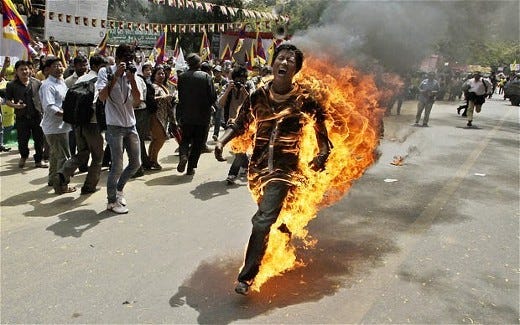
TORTURE
Whilst the protests mentioned above have won some concessions, there continues to be collateral damage. Many protestors, activists and rebels, as well as many innocent bystanders, continue to be arrested. They’re often left in jail indefinitely, without trial, and subjected to torture.
PALESTINE
The Israelis have been known to arrest Palestinian children, tie them up in painful positions, and keep them blindfolded for many hours during interrogations. Male soldiers put their hands on female prisoners — an act which is considered an insult for Arab women. Other women have been burned with cigarettes, had their hair pulled out, and been tortured sexually. They have been made to stand in the ‘refrigerator’; a narrow pitch-black stone shaft in which cold air is blown down on them from above. They have gone for days without being fed, and have been deprived of sleep. Men have had their feet tied to their testicles by nylon cords, and been forced to stand on one leg, so that moving would cause their testicles to be yanked. They have been made to sit outside for hours in the freezing cold or rain, constrained by chains, with bags over their heads.
KURDISTAN
The most notorious prison in Turkish-occupied Kurdistan is in Diyarbakir. From the outside it looks innocuous. The perimeter wall is only one story tall, painted pink, with some corrugated iron added on top as if an afterthought. Inside, narrow buildings line up in rows, and gangly watchtowers look like sheds on stilts.
I spoke to one young Kurd who told me that his uncle had been put in that prison for talking about atheism. He was blindfolded, given electric shocks to the penis and beaten up, before he was released when his brothers paid a ‘ransom’. That prison, according to the young Kurd, was a “Laboratory for the Turkish government” where soldiers put their batons up Kurds’ anal passages, made men ate poo, and even killed prisoners.
TIBET
Electric batons are also used in Tibet. Usually they knock prisoners unconscious, but if the voltage is set too high the consequences can be fatal. Some prisoners are forced to stand on tiptoes, with their hands held high above their head inside serrated handcuffs. They are left in that position overnight. Others are tied and bound, bent into awkward positions that cause permanent damage. Prisoners are made to break rocks, sleep in pools of urine, and survive on a diet of watery soup. During questioning, they are hit with chains made of entwined wire if they answer too quietly or too slowly. Lawyers won’t represent sensitive cases for fear of arrest — not that having a lawyer would make much difference; the Chinese government boasts about its 98% conviction rate, caring more for securing convictions than finding out the truth. They arrest and imprison Tibetans for crimes which include displaying a Tibetan flag, sending an email abroad, and uttering the words ‘human rights’. They deny that the prisons where such atrocities take place even exist.
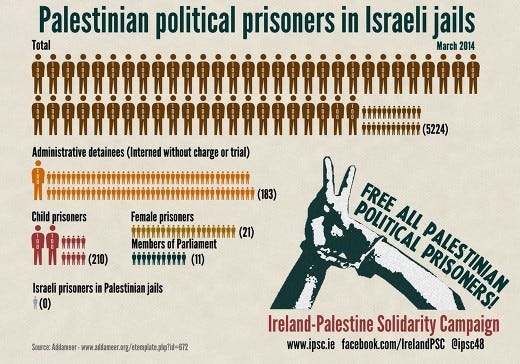
CONCLUSION
Hundreds of nations were liberated from the horrors of occupation during the nineteenth century when the British, Spanish and French empires were all dismantled. Unfortunately, in Palestine, Kurdistan and Tibet, as well as some other nations (including Western Sahara and the nations of North America), independence remains just a dream.
As this blog has shown, the issues facing the people in those countries are incredibly similar, albeit with individual characteristics. The inhabitants of Palestine, Tibet and Kurdistan, are all subjected to physical abuse, cultural oppression, and torture. They have all tried to fight back. They all dream of independence. But the very existence of their nations has been denied. Their economies and their environments have been ransacked.
In my novel, ‘Occupied’, I cover all these issues (albeit in a fictitious country). More significantly, I cover the divides between people which stops them from uniting and overthrowing their oppressors.
In my opinion, this is the key issue here. I don’t believe it is simply enough for the international community to choose one cause, be that the cause of the Palestinians or the cause of the Tibetans. To do so would be to create an unnecessary division. Instead, we must provide a united front. Because the fight for the Palestinians is the fight for the Kurds, which is the fight for the Tibetans. It is a fight for humanity against inhumanity, for people against politics, and for freedom against oppression.
United we stand — divided we fall!
This blog was written to compliment Joss Sheldon’s second novel, ‘Occupied’, which was based on the occupations of Palestine, Kurdistan and Tibet.
The ebook version of Occupied is available from this website, here.
Physical copies are available from Amazon, Barnes & Noble, Waterstones, and all good online retailers…
Also in this blog series...

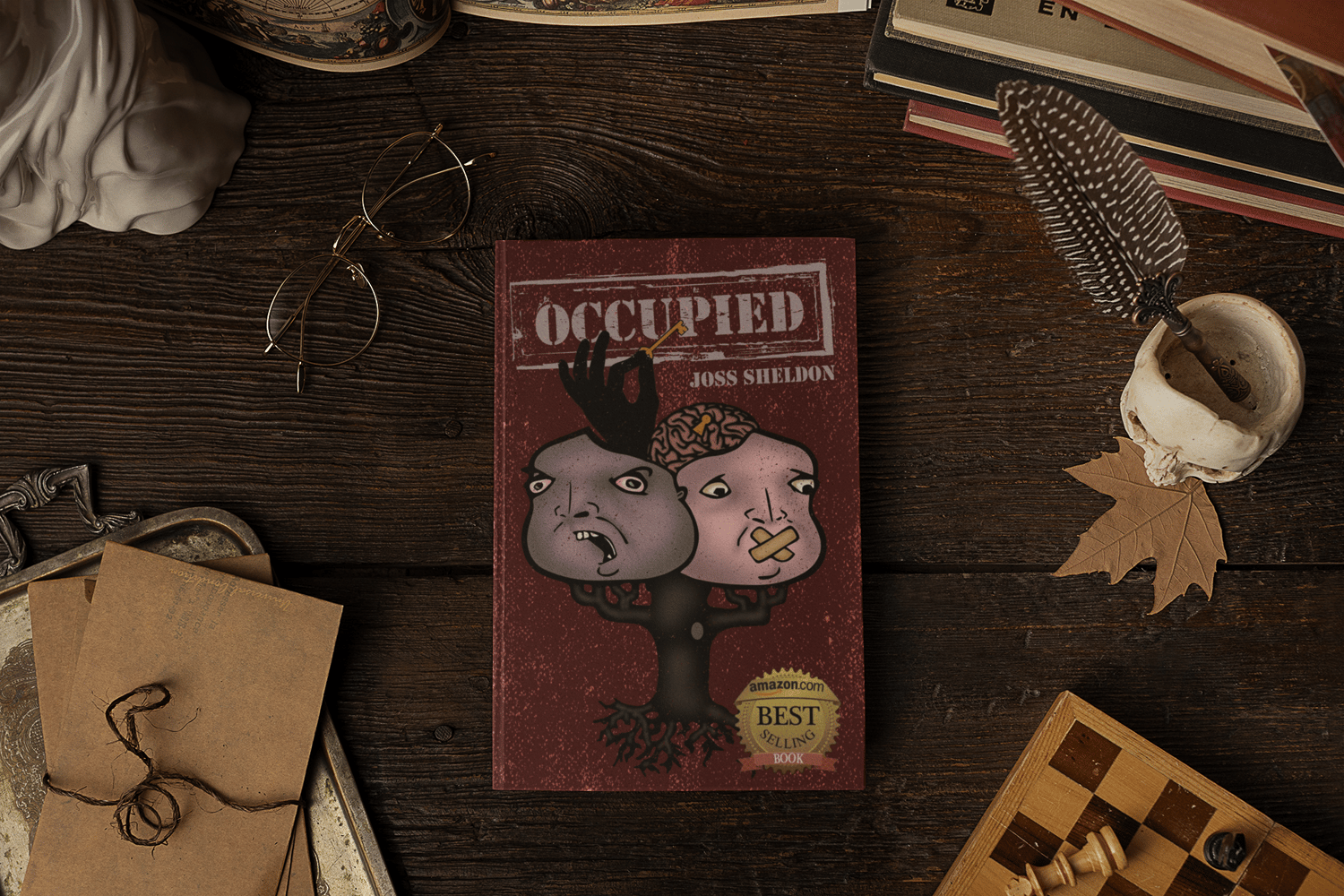
Comments ()